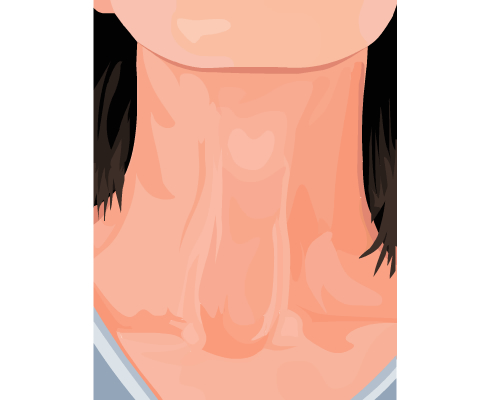Damage
The laryngeal nerves can be damaged by pathology at any point in their course, or be injured during surgery, especially on the thyroid.
- Superior laryngeal nerve damage
- Recurrent laryngeal nerve

Superior laryngeal nerve damage
Damage to the superior laryngeal nerve results in:
- A hoarse voice due to loss of function of the tensor of the cord (cricothyroid). The hoarseness is temporary as the muscle on the other side compensates
- An increased risk of aspiration resulting from loss of sensation above the cords
Note: damage may be limited to the external branch, which may be may be injured when the superior thyroid vessels are secured.
Recurrent laryngeal nerve, unilateral damage
Unilateral recurrent laryngeal nerve damage produces the following problems:
- Vocal cord palsy, with complete inability to abduct and a resulting cord position towards the midline. This produces a hoarse voice that is corrected to an extent as the other cord moves across to compensate. It also means the glottis is unable to close tightly so that the patient cannot generate a positive intrathoracic pressure to cough effectively, which can lead to respiratory problems postoperatively.
- The risk of aspiration is increased because of the infraglottic loss of sensation.
Recurrent laryngeal nerve, bilateral damage
Bilateral vocal cord palsy resulting from damage to both recurrent laryngeal nerves produces severe respiratory distress, presenting as stridor as the flaccid vocal cords flap together.
Urgent intubation is required acutely, with a tracheostomy likely to follow.